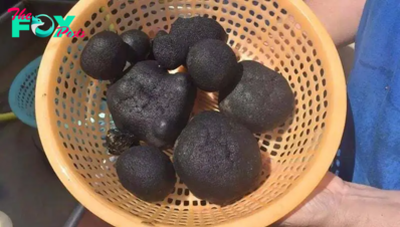Technology
This bizarre vortex doesn't just look cool — it can be a key cog in making scalable high-speed 6G networks a reality
The future of super-fast 6G communications could lie in the use of flexible plates with eye-catching spirals of carbon nanotubes tuned to broadcast terahertz (THz) signals.
In a new study published April 30 in the journal Advanced Optical Materials, researchers explained how layers of spiral zone plates can act as optical components to manage a THz beam. This is electromagnetic radiation in the 1 trillion hertz spectrum that sits between the microwave and infrared frequency bands for use in 6G communications, microscopy and medicine.
The varifocal Fresnel zone plates – devices with transparent and opaque concentric rings used to focus light and other waveforms – were constructed of a thin film of carbon nanotubes arranged in a spiral pattern that can twist the waveform of a THz beam passing through it. The new component can be seen here.
By combining two plates and rotating them relative to each other, the researchers changed the distribution of the intensity of the THz beam and split it into several areas of different radiation intensities. This could be used to create several channels for high-speed information transfer.
Related: Scientists could make blazing-fast 6G using curving light rays
Maria Burdanova, a senior researcher at the Moscow Institute of Physics and Technology’s Laboratory of Nanooptics and Plasmonics, explained in a statement that the paper outlines a way to overcome the challenges of making instruments that can tap into the THz spectrum band — which will be essential for high-speed 6G in the future.
"One of the key features highlighting the prospects of carbon nanotubes is the possibility to create multifunctional devices with properties that can be fine-tuned by different effects through responses at the atomic, supramolecular, and micron levels," Burdanova said in the statement. "For the first time, our joint team has succeeded in introducing an additional effect: interaction of different nanotube patterns. This paves the way for future devices."
-

 Technology6h ago
Technology6h agoTeslas are deadliest road vehicles despite safety features: study | The Express Tribune
-

 Technology19h ago
Technology19h agoThere Is a Solution to AI’s Existential Risk Problem
-

 Technology21h ago
Technology21h agoUS pushes to break up Google, calls for Chrome sell-off in major antitrust move | The Express Tribune
-

 Technology1d ago
Technology1d agoPublic health surveillance, from social media to sewage, spots disease outbreaks early to stop them fast
-

 Technology1d ago
Technology1d agoTikTok, PTA host youth safety summit in Pakistan | The Express Tribune
-

 Technology1d ago
Technology1d agoWhy a Technocracy Fails Young People
-

 Technology1d ago
Technology1d agoTransplanting insulin-making cells to treat Type 1 diabetes is challenging − but stem cells offer a potential improvement
-

 Technology1d ago
Technology1d agoJapan's $26 billion deep sea discovery sparks serious environmental concerns | The Express Tribune



























